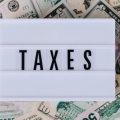Tax issues have a way of sneaking up on people. A missed return here, a late payment there, and suddenly you’re facing penalties, interest, or even legal consequences. Two of the most common tools Canadians can use to clean things up or ease the pressure are the Taxpayer Relief Provisions and the Voluntary Disclosures Program (VDP).
One of the first things a taxpayer relief lawyer will explain to clients in tax trouble is that understanding the difference between these two options can save you time, money, and a whole lot of stress. They both deal with tax problems, can be extremely helpful, and offer some kind of leniency—but they solve completely different kinds of problems.
Table of Contents
What are the Taxpayer Relief Provisions?

Image by rastudio via freepik
These provisions are for people who are being hit with interest and penalties but have a legitimate reason for filing or paying their taxes late. They don’t erase your tax debt or wipe the slate clean, but they can reduce or cancel the extra costs that piled on after the fact. These are situations where someone has fallen ill, experienced a natural disaster, or went through a serious financial hardship that made it impossible to meet deadlines. The CRA recognizes that sometimes life gets in the way—and that’s what this program is for.
You’re still on the hook for the actual tax owed. But if your case fits the CRA’s criteria, you can ask for a reduction or cancellation of interest and penalties going back up to ten years. This is a formal request—you submit a form RC4288, explain your circumstances, and provide supporting documents.
What is the Voluntary Disclosures Program?
The VDP is a way to come clean if you made mistakes or left things out on past tax filings. Unlike Taxpayer Relief, this program focuses on the original tax filings themselves—not just the penalties and interest.
If you forgot to report foreign income, didn’t file a return at all, or claimed expenses you shouldn’t have, apply through the VDP before the CRA contacts you about it, and if you qualify, you could avoid prosecution and get partial relief from penalties.
It’s designed to encourage people to fix past errors voluntarily. The key word there is “voluntarily.” Once the CRA starts an audit or investigation, it’s too late.
A valid VDP application needs to be complete, voluntary, and involve a penalty. You’ll also have to pay the tax owed (or arrange to), but avoiding criminal charges or gross negligence penalties is a huge win in serious cases.
Final Thoughts
Both programs are there to help, but they’re not guaranteed. You need to apply properly, provide detailed information, and make your case. Even if you think your situation is minor, the consequences of ignoring it can snowball fast. Considering the significant swings in potential financial outcomes, consulting a tax lawyer is a smart investment that will likely save you money.
























